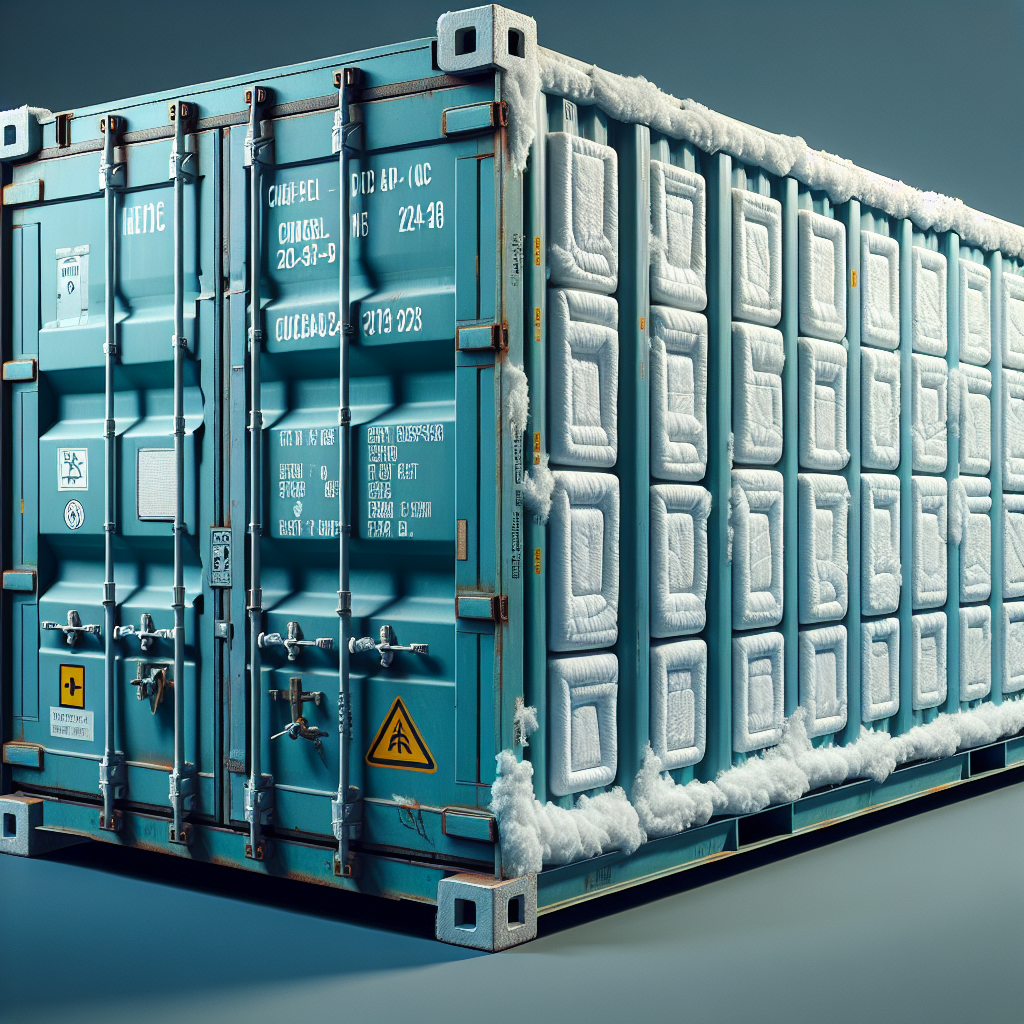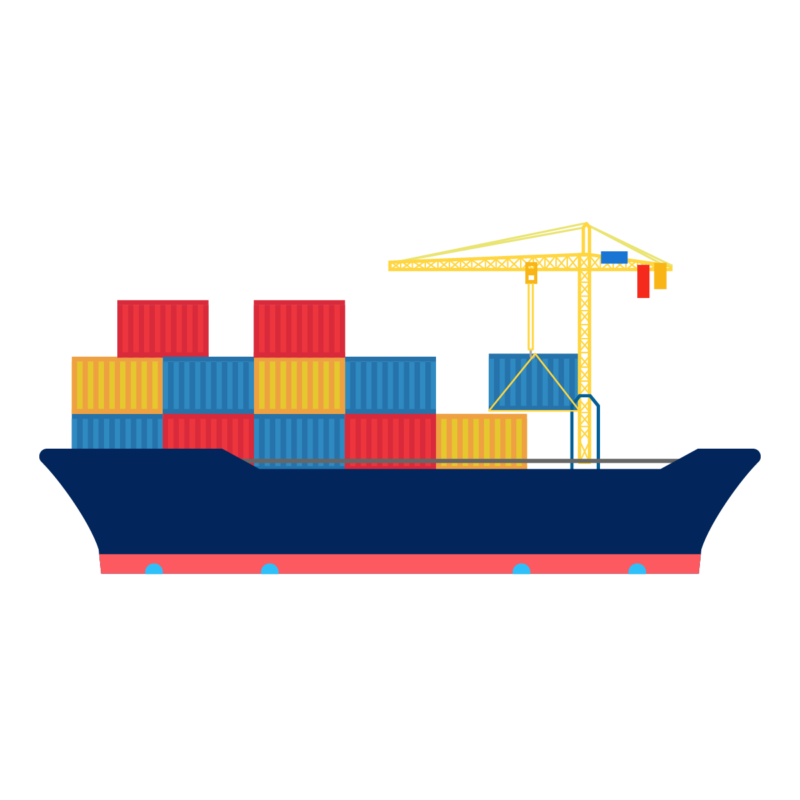Uncategorized
insulated cargo container
Benefits of Using Insulated Cargo Containers for Shipping
Insulated cargo containers have become an essential tool in the shipping industry, providing a safe and efficient way to transport goods across long distances. These containers are designed to protect the contents from extreme temperatures, humidity, and other environmental factors that could potentially damage the cargo. In this article, we will explore the benefits of using insulated cargo containers for shipping and how they have revolutionized the transportation of goods.
One of the main advantages of using insulated cargo containers is their ability to maintain a consistent temperature throughout the shipping process. This is especially important for perishable goods such as food, pharmaceuticals, and chemicals. These items require specific temperature ranges to ensure their quality and safety. Insulated containers are equipped with a layer of insulation material, usually made of polyurethane foam, which helps to regulate the temperature inside the container. This insulation acts as a barrier, preventing heat or cold from entering the container and keeping the contents at a stable temperature.
Another benefit of using insulated cargo containers is their durability. These containers are made of high-quality materials such as steel, aluminum, or fiberglass, which are designed to withstand harsh weather conditions and rough handling during transportation. This makes them ideal for long-distance shipping, where the containers may be exposed to extreme temperatures, strong winds, and heavy rain. The sturdy construction of these containers also ensures that the contents remain intact and undamaged, reducing the risk of losses for the shipping company and the customer.
Insulated cargo containers also offer enhanced security for the goods being transported. These containers are designed to be airtight, making it difficult for thieves or unauthorized individuals to access the contents. This is particularly important for high-value items such as electronics, luxury goods, and valuable documents. The containers are also equipped with sturdy locks and seals, which can only be opened by authorized personnel. This provides peace of mind for both the shipping company and the customer, knowing that their goods are safe and secure during transit.
In addition to protecting the contents from external factors, insulated cargo containers also offer protection from internal factors such as condensation. When goods are transported in a container, changes in temperature and humidity can cause condensation to form inside the container. This can be damaging to the goods, especially if they are sensitive to moisture. Insulated containers prevent this by maintaining a consistent temperature and reducing the risk of condensation. This is particularly beneficial for goods that are susceptible to rust, mold, or mildew.
Insulated cargo containers also offer cost savings for shipping companies and customers. The use of these containers eliminates the need for additional packaging materials, such as thermal blankets or refrigerated trucks, which can be expensive. The containers also reduce the risk of spoilage or damage to the goods, which can result in financial losses for both parties. Additionally, the durability of these containers means they can be reused multiple times, reducing the need for frequent replacements and saving money in the long run.
In conclusion, insulated cargo containers have revolutionized the shipping industry by providing a safe, efficient, and cost-effective way to transport goods. Their ability to maintain a consistent temperature, durability, enhanced security, and cost savings make them an invaluable tool for shipping companies and customers alike. As the demand for temperature-sensitive goods continues to grow, the use of insulated cargo containers will only become more prevalent in the shipping industry.
How to Choose the Right Insulated Cargo Container for Your Needs

Insulated cargo containers are an essential tool for businesses and individuals who need to transport goods that require temperature control. These containers are designed to keep the contents at a specific temperature, whether it is hot or cold, throughout the journey. They are commonly used for shipping perishable items such as food, pharmaceuticals, and chemicals. With the increasing demand for temperature-sensitive goods, the market for insulated cargo containers has also grown. However, with so many options available, it can be overwhelming to choose the right one for your needs. In this article, we will discuss the key factors to consider when selecting an insulated cargo container.
The first and most crucial factor to consider is the type of goods you will be transporting. Different goods have different temperature requirements, and it is essential to choose a container that can maintain the required temperature range. For example, if you are shipping frozen food, you will need a container that can maintain temperatures below freezing. On the other hand, if you are transporting pharmaceuticals, you will need a container that can maintain a specific temperature range, usually between 2-8 degrees Celsius. It is crucial to determine the temperature requirements of your goods before choosing an insulated cargo container.
The size of the container is another crucial factor to consider. Insulated cargo containers come in various sizes, ranging from 10 feet to 40 feet. The size you choose will depend on the volume of goods you need to transport. It is essential to consider not only the current volume but also any potential growth in your business. If you anticipate an increase in the volume of goods, it is advisable to choose a larger container to avoid the need for frequent replacements.
The material used to make the container is also an important consideration. Insulated cargo containers are typically made of steel, aluminum, or fiberglass. Steel containers are the most durable and can withstand harsh weather conditions. However, they are also the heaviest and may not be suitable for all modes of transportation. Aluminum containers are lighter and more suitable for air or sea transport. Fiberglass containers are the lightest and are ideal for land transport. It is essential to consider the mode of transportation and the durability of the container when choosing the material.
Another crucial factor to consider is the insulation material used in the container. The most common insulation materials are polyurethane foam and polystyrene foam. Polyurethane foam is more effective in maintaining temperature control and is also more durable. However, it is also more expensive. Polystyrene foam is a more affordable option but may not be as effective in extreme temperatures. It is essential to consider the temperature requirements of your goods and the budget when choosing the insulation material.
The type of door on the container is also an important consideration. There are two types of doors commonly used in insulated cargo containers – roll-up doors and swing doors. Roll-up doors are more convenient as they take up less space when opened. However, they may not be suitable for loading and unloading large items. Swing doors, on the other hand, are more suitable for loading and unloading but require more space to open. It is essential to consider the type of goods you will be transporting and the loading and unloading process when choosing the door type.
In conclusion, choosing the right insulated cargo container is crucial for the safe and efficient transportation of temperature-sensitive goods. It is essential to consider factors such as the type of goods, size, material, insulation, and door type when making your decision. By carefully considering these factors, you can ensure that you choose the right insulated cargo container for your needs.
Innovative Uses for Insulated Cargo Containers Beyond Shipping and Storage
Insulated cargo containers, also known as shipping containers, have been used for decades to transport goods across the world. These large metal boxes are designed to withstand harsh weather conditions and protect their contents during long journeys. However, in recent years, people have started to think outside the box and come up with innovative uses for these containers beyond their traditional purpose of shipping and storage.
One of the most popular alternative uses for insulated cargo containers is converting them into homes. With the rise of the tiny house movement, people are looking for affordable and sustainable housing options. Shipping containers provide a perfect solution as they are relatively inexpensive, durable, and can be easily modified to fit the needs of the homeowner. These homes can be built off-site and then transported to their final location, making them a great option for remote or hard-to-reach areas.
But it’s not just homes that can be made from insulated cargo containers. They have also been used to create offices, schools, and even hotels. The first hotel made entirely from shipping containers opened in 2008 in Uxbridge, England. The 120-room hotel, called Travelodge, was built using 86 containers and took only four months to complete. This innovative use of containers not only provides a unique experience for guests but also reduces construction time and costs.
Another creative use for insulated cargo containers is as pop-up shops or restaurants. These containers can be easily transported and set up in different locations, making them a great option for businesses looking to expand their reach. They also provide a unique and eye-catching aesthetic that can attract customers. In addition, containers can be modified to include windows, doors, and other features to make them more suitable for commercial use.
But it’s not just businesses that are utilizing insulated cargo containers for their pop-up ventures. Non-profit organizations have also found creative ways to use these containers for social causes. For example, a charity called “The Street Store” uses containers to create pop-up clothing stores for the homeless. These stores are set up in different locations and provide free clothing for those in need. The containers not only serve as a functional space but also raise awareness for the cause.
Insulated cargo containers have also been used for disaster relief efforts. When natural disasters strike, these containers can be quickly transported to the affected areas and used as temporary shelters. They are also used to store and transport essential supplies such as food, water, and medical equipment. The durability and weather-resistant properties of these containers make them a reliable option for disaster relief efforts.
In addition to their practical uses, insulated cargo containers have also been used for artistic purposes. Artists and designers have transformed these containers into unique and eye-catching structures. For example, in 2015, a group of architects created a temporary pavilion made entirely from shipping containers for the London Festival of Architecture. The pavilion, called “ContainerVille,” showcased the versatility and potential of these containers beyond their traditional use.
In conclusion, insulated cargo containers have proven to be more than just a means of shipping and storage. Their durability, portability, and versatility have made them a popular choice for various innovative uses. From homes and hotels to pop-up shops and disaster relief efforts, these containers have shown that they can be transformed into almost anything with a little creativity and imagination. As we continue to find new and innovative ways to use these containers, it’s clear that they have a bright future ahead beyond their traditional purpose.

